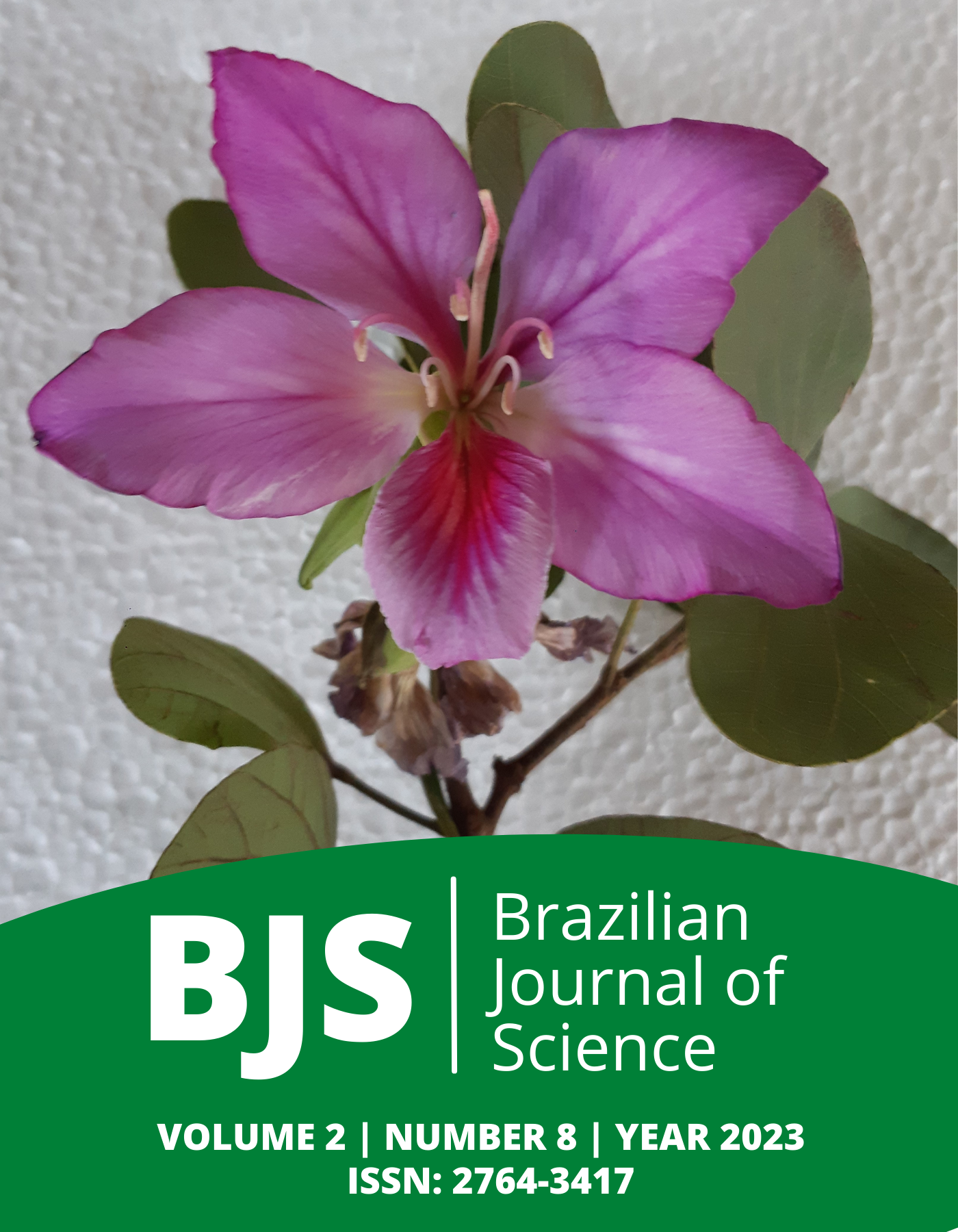Anti-microbial activity of seed oils & protein estimation of seed-content in Clitoria ternetea, Lagenaria siciraria & Ziziphus mauritiana
DOI:
https://doi.org/10.14295/bjs.v2i8.362Keywords:
Clitoria genus, Lagenaria genus, Ziziphus genus, seed oil, biological activityAbstract
Asian plants of flower, vegetable and fruit named Clitoria ternetea, Lagenaria siciraria and Ziziphus mauritiana respectively are known for their extensive uses in traditional medicine as well as traditional treatment of various diseases and infections. Several studies have already been done so far on these plants and its various parts but the studies on their seeds as well as their seed oilwas lacking. In this work, we determined the protein content of these seeds as well as we extracted the seed oils and determined their anti-microbial activity independently along with the anti-microbial activity by mixing all these oils together in equal ratios. Both, protein determination and anti-microbial activity determination showed considerable and potential results. The Lagenaria siciraria seeds (in ethanol extract) showed highest protein content amongst all i.e., 4.44 (μg/mL-1) whereas Clitoria ternetea seeds displayed highest protein content (in water extract) amongst all i.e., 5.07 (μg/mL-1). The anti-microbial activity of the mixed seed oil showed better and great results as compared to individual anti-microbial activity of seed oils.
References
Bravo, F. O. (1971). Studies on the chemical composition of the seed of Clitoria ternatea Linn. Técnica Pecuaria en México, 18, 100-102. https://www.feedipedia.org/node/15352
Cook, B. G., Pengelly, B. C., Brown, S. D., Donnelly, J. L., Eagles, D. A., Franco, M. A., Hanson, J., Mullen, B. F., Partridge, I. J., Peters, M., & Schultze-Kraft, R. (2005). Tropical forages. CSIRO, DPI&F (Qld), CIAT and ILRI, Brisbane, Australia.
El-Dengawy, R. A., Khalifa, A., & Ramadan, B. R. (2001). Use of bottle gourd (Lagenaria siceraria) seeds in production of Tahina. Egypt Journal of Food Science, 29(1), 1-11.
Habibur R. A. S. (2003). Bottle gourd (Lagenaria siceraria) - vegetable for good health. Natural Product Radiance; 2(5), 249-256. Available in: https://nopr.niscpr.res.in/bitstream/123456789/12282/1/NPR%202%285%29%20249-256.pdf Access in: March 3, 2023.
Hassan, E. G., Alkareem, A. M. A., & Mustafa, A. M. I. (2008). Effect of fermentation and particle size of wheat bran on the antinutritional factors and bread quality. Pakistan J. Nutr., 7(4), 521-526, https://doi.org/10.3923/pjn.2008.521.526 DOI: https://doi.org/10.3923/pjn.2008.521.526
Hassan, L. G., Sani, N. A., Dangoggo, S. M., & Ladan, M. J. (2008). Nutritional value of bottle gourd (Lagenaria siceraria) seeds. Global Journal of Pure and Applied Sciences, 14(3), 301-306. https://doi.org/10.4314/gjpas.v14i3.16812 DOI: https://doi.org/10.4314/gjpas.v14i3.16812
Hussein, M. M. A., Arisha, A. H., Tayel, E. M., & Abdo, S. A. (2021). Effect of long-term oral exposure to carmoisine or sunset yellow on different hematological parameters and hepatic apoptotic pathways in mice. Journal of Animal Health and Production, 9(s1), 80-86. http://dx.doi.org/10.17582/journal.jahp/2021/9.s1.80.86 DOI: https://doi.org/10.17582/journal.jahp/2021/9.s1.80.86
Kubde, M. S., Khadabadi, S. S., & Farooqui Deore, S. L. (2010). Lagenaria siceraria: phyto-chemistry, pharmacognosy and pharmacological studies. Report and Opinion, 2(3), 91-98.
Macedo, M. L. R., & Xavier-Filho, J. (1992). Purification and partial characterisation of trypsin inhibitors from seeds of Clitoria ternatea. Journal of the Science of Food and Agriculture, 58(1), 55-58. https://doi.org/10.1002/jsfa.2740580110 DOI: https://doi.org/10.1002/jsfa.2740580110
Odeyinka, S. M., Hector, B. L., Ørskov, E. R., & Newbold, C. J. (2004). Assessment of the nutritive value of the seeds of some tropical legumes as feeds for ruminants. Livestock Research for Rural Development, 16(9). http://www.lrrd.org/lrrd16/9/odey16069.htm
Ojiako, O. A., & Igwe, C. U. (2007). Nutritional and anti-nutritional compositions of Cleome rutidosperma, Lagenaria siceraria, and Cucurbita maxima seeds from Nigeria. Journal of Medicinal Food, 10(4), 735-738. https://doi.org/10.1089/jmf.2007.625 DOI: https://doi.org/10.1089/jmf.2007.625
Orwa, C., Mutua, A., Kindt, R., Jamnadass, R., & Anthony, S. (2009). Agroforestree database: a tree reference and selection guide version 4.0. World Agroforestry Centre, Kenya.
Piccirilli, A., Smadja, J., Msika, P., Grondin, I., & Piccardi, N. (2007). Use of an oil of the gourd family for inhibiting 5-alpha-reductage activity. In: United State Patent, Patent No. US 7238377 B2, United States, p. 9.
Schlink, A. C., & Burt, R. L. (1993). Assessment of the chemical composition of selected tropical legume seeds as animal feed. Tropical Agriculture (Trinidad), 70(2), 169-173. https://journals.sta.uwi.edu/ojs/index.php/ta/article/view/7088
Sharif M. Al-R., Jung I. Y., Hyo J. K., Jong S. K., & Sun C. K. (2010). Anti-inflammatory activity of seed essential oil from Zizyphus jujuba. Food and Chemical Toxicology, 48(2), 639-643. https://doi.org/10.1016/j.fct.2009.11.045. DOI: https://doi.org/10.1016/j.fct.2009.11.045
Upaganlawar, A. (2017). Lagenaria siceraria (Bottle Gourd) in various cardiovascular complications. Cardiovascular Diseases, 1, 44-56. https://doi.org/10.2174/9781681084893117010004 DOI: https://doi.org/10.2174/9781681084893117010004
Downloads
Published
How to Cite
Issue
Section
License
Copyright (c) 2023 Porshia Sharma, Pragya Rathore, Yogesh Choudhary, Yash Tatwade, Akshada Joshi

This work is licensed under a Creative Commons Attribution 4.0 International License.
Authors who publish with this journal agree to the following terms:
1) Authors retain copyright and grant the journal right of first publication with the work simultaneously licensed under a Creative Commons Attribution License that allows others to share the work with an acknowledgement of the work's authorship and initial publication in this journal.
2) Authors are able to enter into separate, additional contractual arrangements for the non-exclusive distribution of the journal's published version of the work (e.g., post it to an institutional repository or publish it in a book), with an acknowledgement of its initial publication in this journal.
3) Authors are permitted and encouraged to post their work online (e.g., in institutional repositories or on their website) prior to and during the submission process, as it can lead to productive exchanges, as well as earlier and greater citation of published work.




